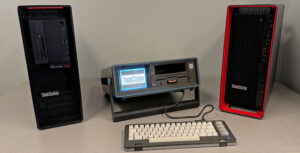Tick-Tock! Black Friday is just a few short days away, and someone out there is contemplating the purchase of a laptop, desktop or tablet. Which do you pick? How do you decide?
First off, erase your perceptions. Business class Lenovo and Dell systems are, overall, very well built systems. They’re also pricey, and well outside the price range you’re going to find at Black Friday. Why so pricey? They cost more but are made of, as Snapple would say, “better stuff”. Motherboard vendors are locked throughout the duration of the product run, and parts and pieces are picked for quality *and* low cost. While businesses are purchasing Dell Latitude/Optiplex or Lenovo ThinkPad/ThinkCentre, consumers purchase (and save) via the Inspiron or IdeaPad/IdeaCentre line of systems. (Dell uses a single name for the consumer laptop and desktop line.)
So, how does one decide what laptop or desktop to purchase? (If you’re the instant gratification type that just wants to grab something from the Black Friday fliers, skip the next two paragraphs.)
First you need to put together a no-BS assessment of how you plan on using your device. Desktops are easy: Productivity, Production, or Play? Will you be running standard office style apps, editing/producing movies, music or videos, or racking up body count via Battlefield 4? Each step costs more than the previous but, for the most part, the “Battlefield” PC will do an excellent job of handling productivity or production work.
Laptops are a little more finicky, and solid set. What that means is, a desktop can be upgraded or tweaked should some of your needs change; with a laptop what you buy is what you’re stuck with for the duration. Productivity and production are the two areas of focus, but you’ll also need to consider things like screen size, storage space and whether or not an optical drive is still a necessity to you. Once you’ve decided on your needs, it’s time to research.
Researching a broad spectrum of computer options can be a little daunting. Your favorite search engine can help a little, but the signal to noise ratio can be a little overwhelming. Amazon ends up being my first stop, but any multi-vendor retailer will do (Staples, Rakuten, etc). Plug in the exact model number of the device you’re looking at, and check the user reviews. Two immediate metrics are how many stars it has (0-5) and how many reviews it has. Then dig into the reviews, starting with the bad ones first. Keep in mind that some people don’t understand how reviews work so go ahead and throw out the reviews that are angry with a process or experience with the supplier (“My package arrived a day late! Therefore this laptop gets ONE STAR!) and focus on the reviews where people are discussing issues or concerns that might be important to you. (The screen is too small, the fonts look too fuzzy, it didn’t work on arrival, etc.) Scan *ALL* the reviews looking for hints on service from the vendor. You may have a problem someday (this goes double for laptops or tablets), how does the manufacturer handle it? For example, ASUS is reported to make the most reliable systems on the market, but guess who also has the worst customer support when one of them fails?
Before moving on to Tablets, I should clarify that Windows based tablet devices fall under the laptop category for this discussion. They’re nearly interchangeable with exception to two key features. If you’re using a Windows Tablet (or convertible laptop design), look for stylus support and palm rejection. Stylus support means it supports a high quality pen input, and palm rejection means it ignores your hand while you’re writing on the device.
For ARM (Advanced RISC Machine) tablets (Apple and Android) read on…
How do you purchase a tablet? That’s actually a little trickier than it sounds. Did you know that Android is the most popular tablet operating system? Did you also know that the most popular tablet manufacturer doesn’t run Android? (Those answers also apply to smartphones.) This is where hands-on is key. Visit a brick and mortar store and spend some time test driving the different interfaces. I highly, HIGHLY recommend that you don’t purchase anything online that you haven’t physically held and operated. Once you see something you like, jump back up a couple of paragraphs and start the review/research process.

For fun I bought a $35 Android tablet.
I would use it as a paperweight, if it weren’t insulting to the paper.
In the tablet market, budget is not your friend, but research is. Also keep in mind your audience. Ease of use is key when dragging Grandma into the digital age.
If you must press me for recommendations, start your search with Apple or the Google Nexus line of tablets.
And under no circumstances should you buy a Microsoft Surface RT device. You’ve been warned.
Happy Hunting!



